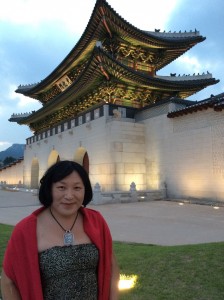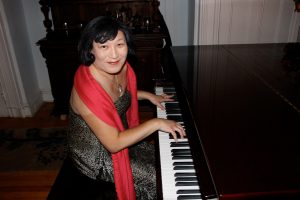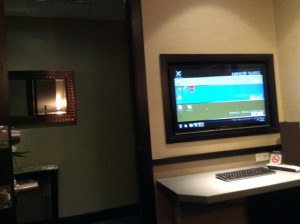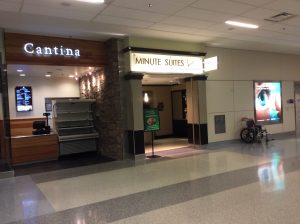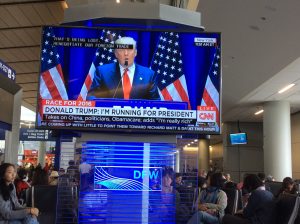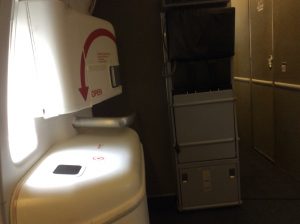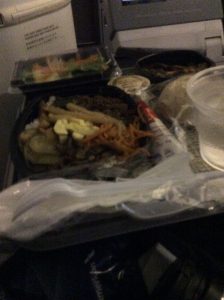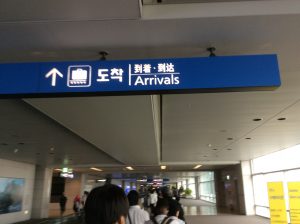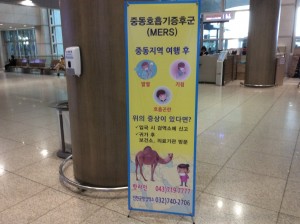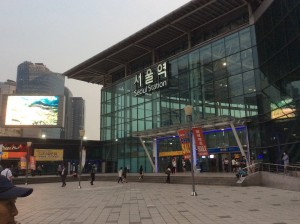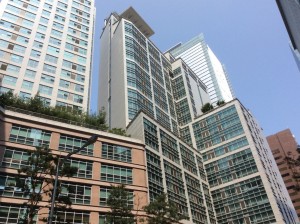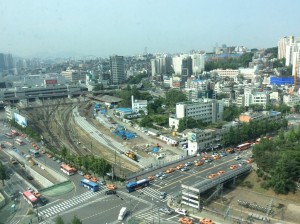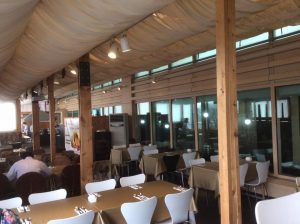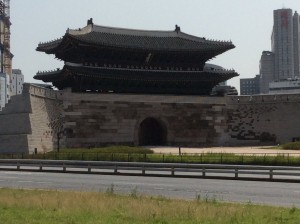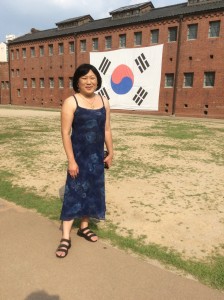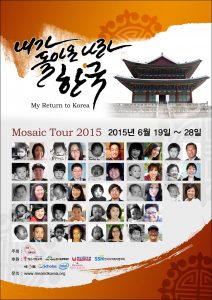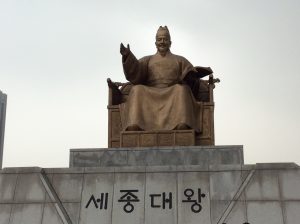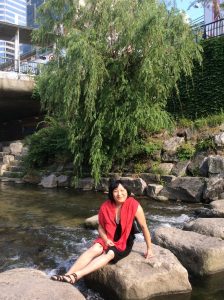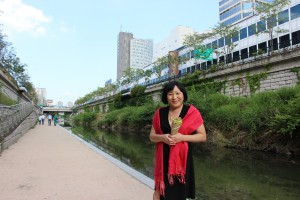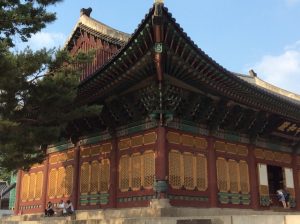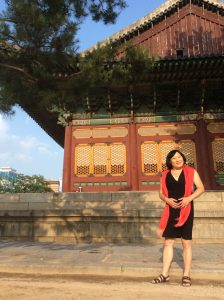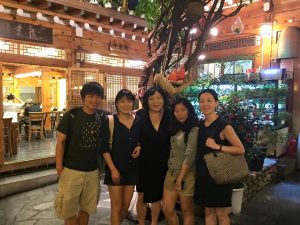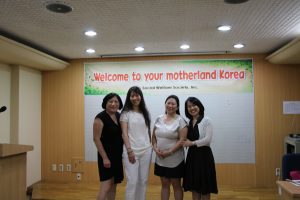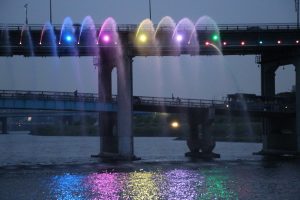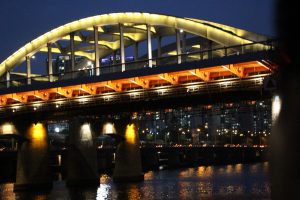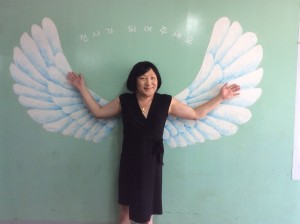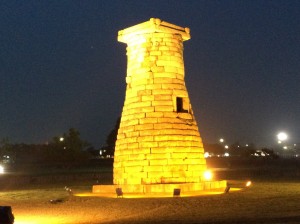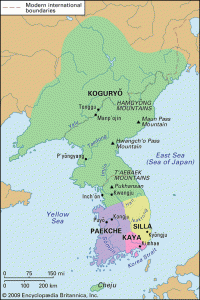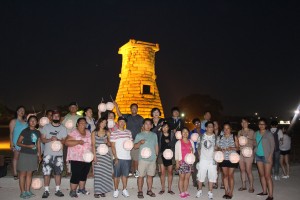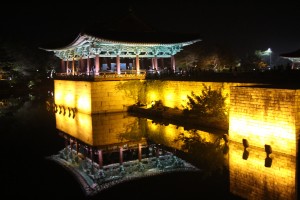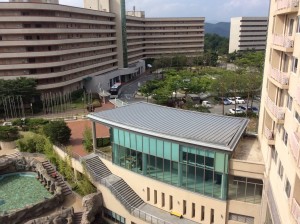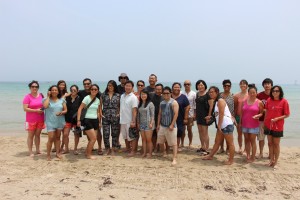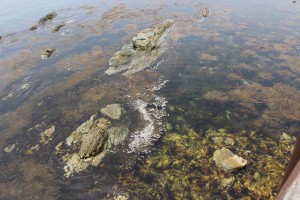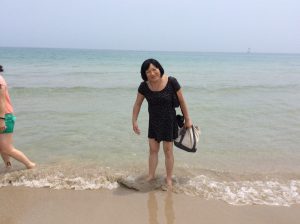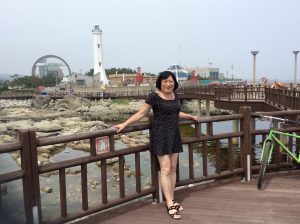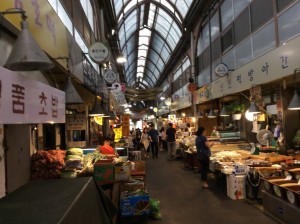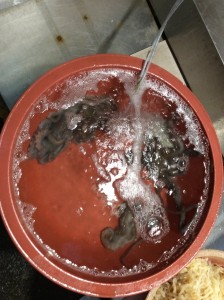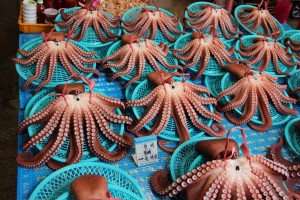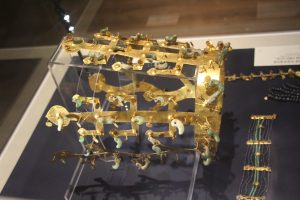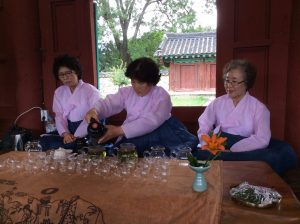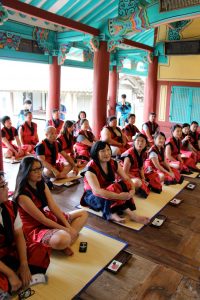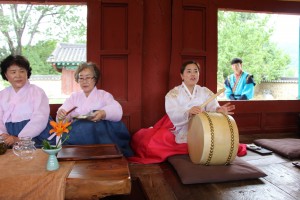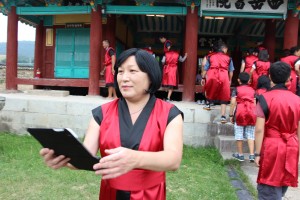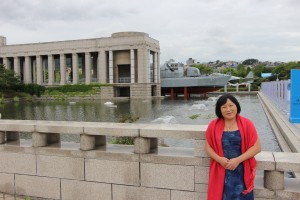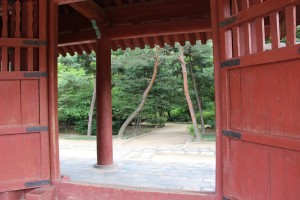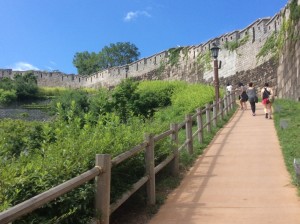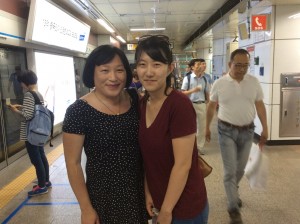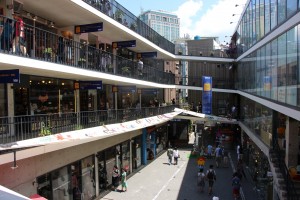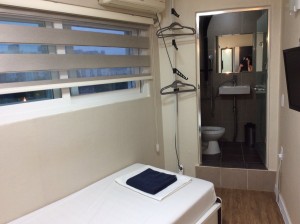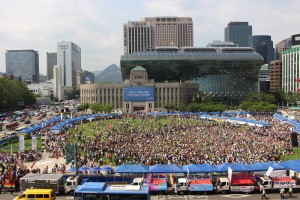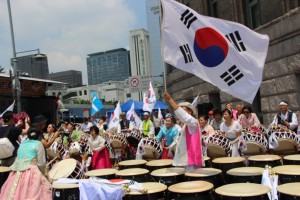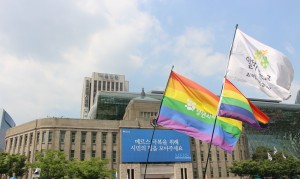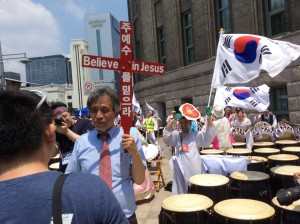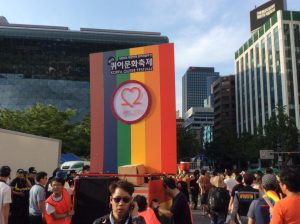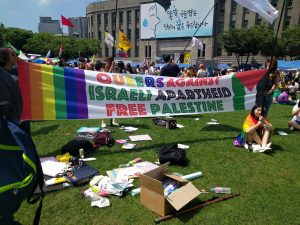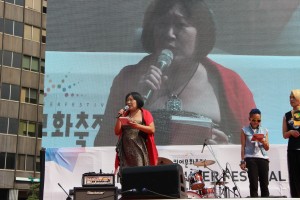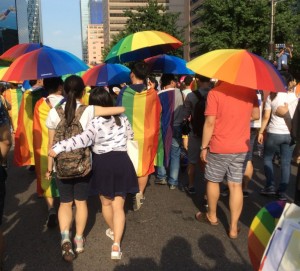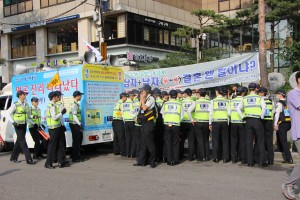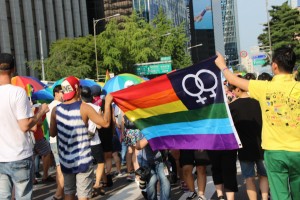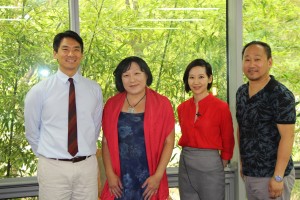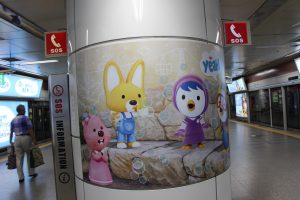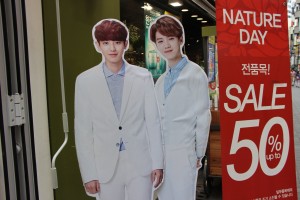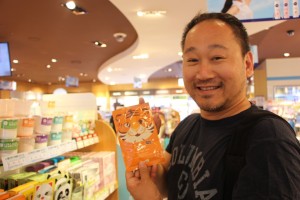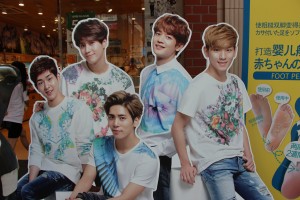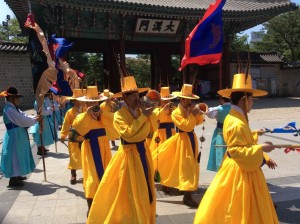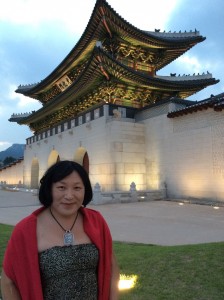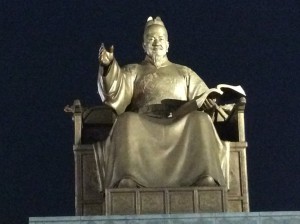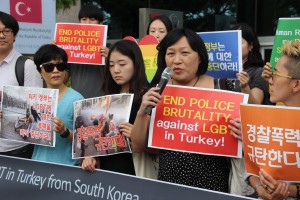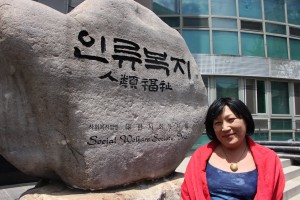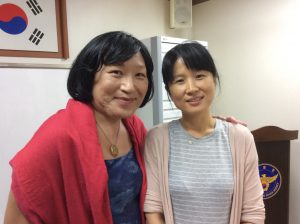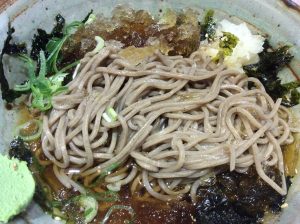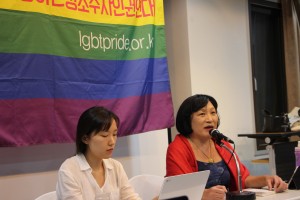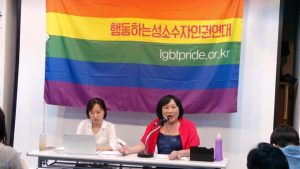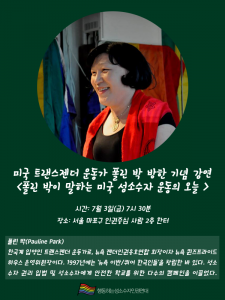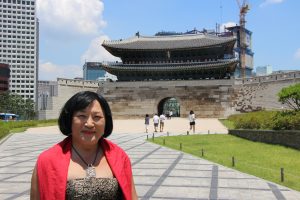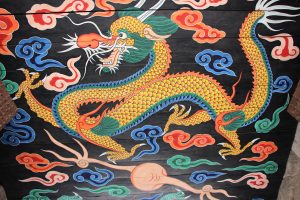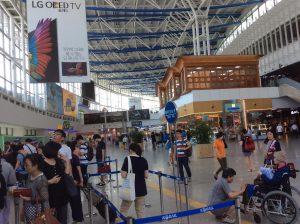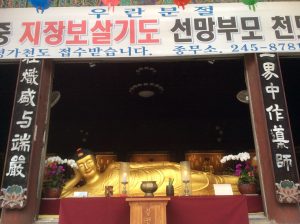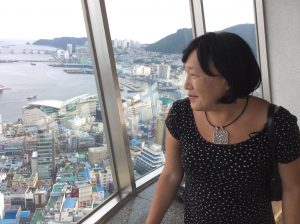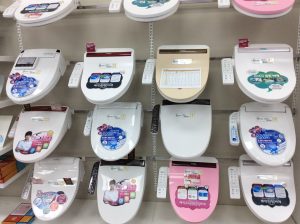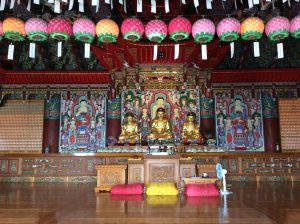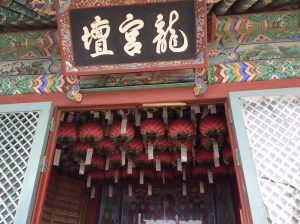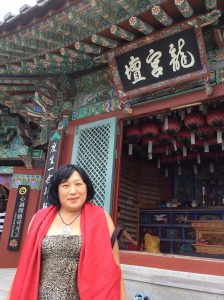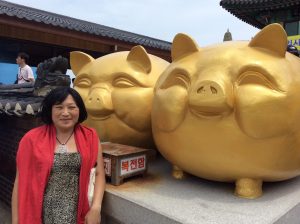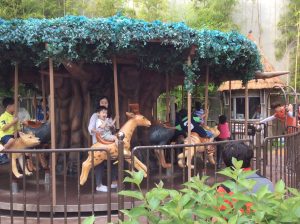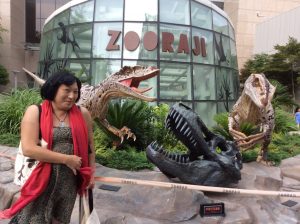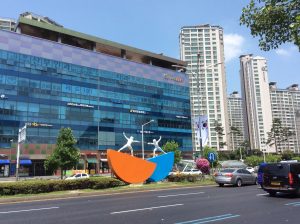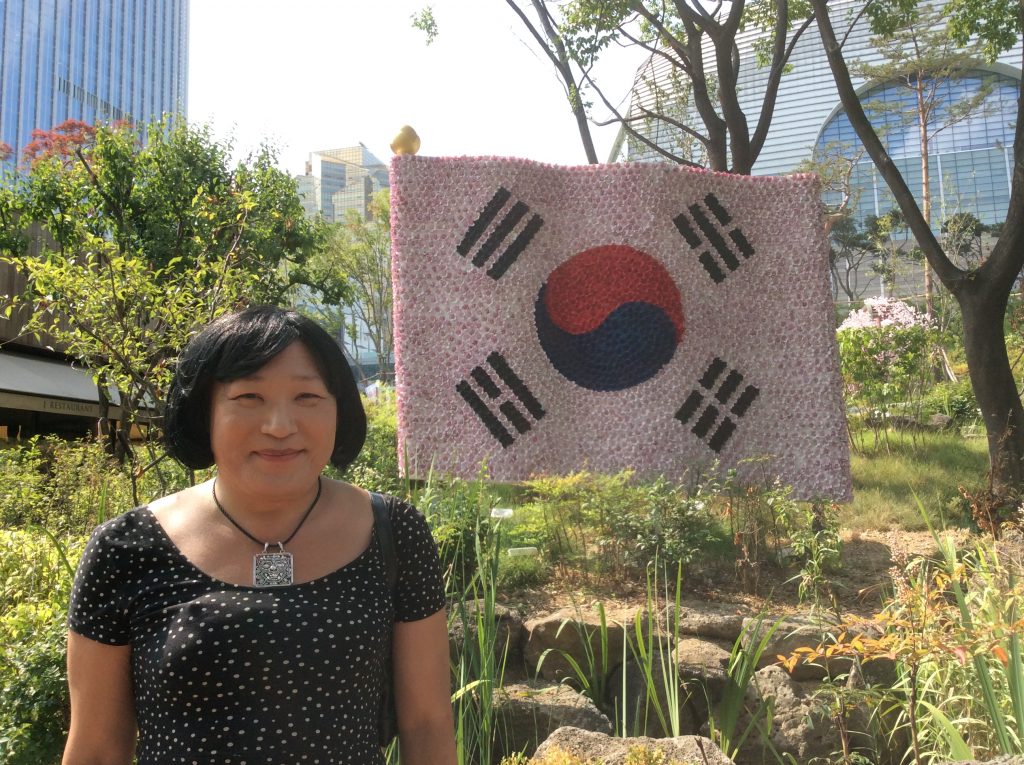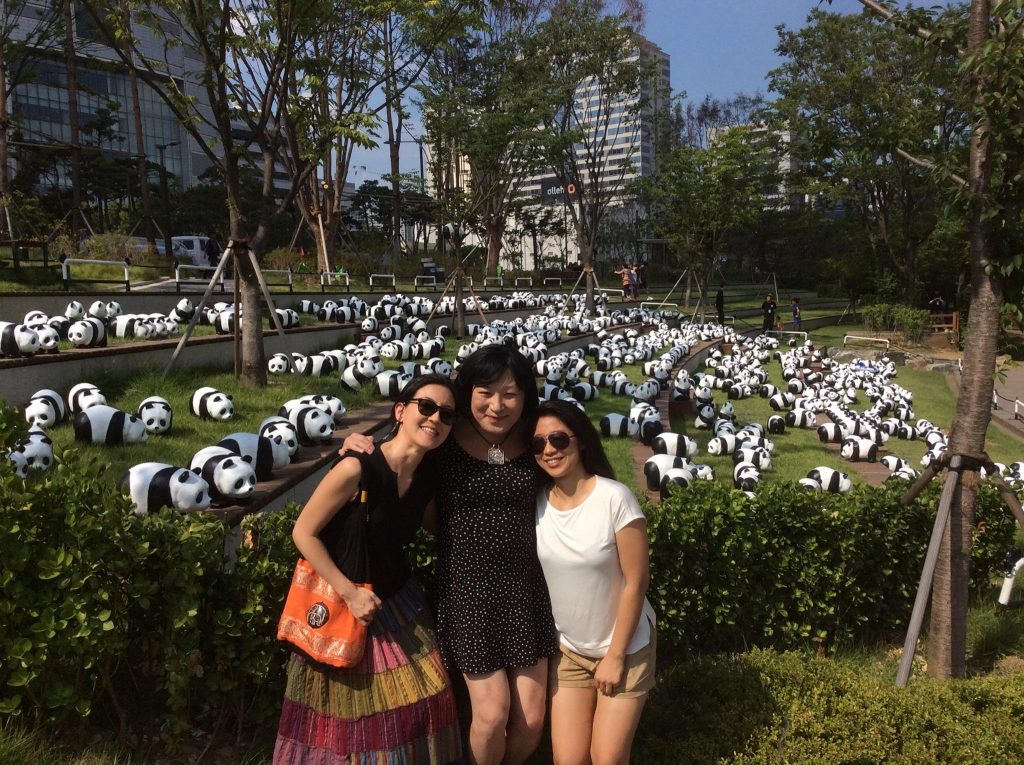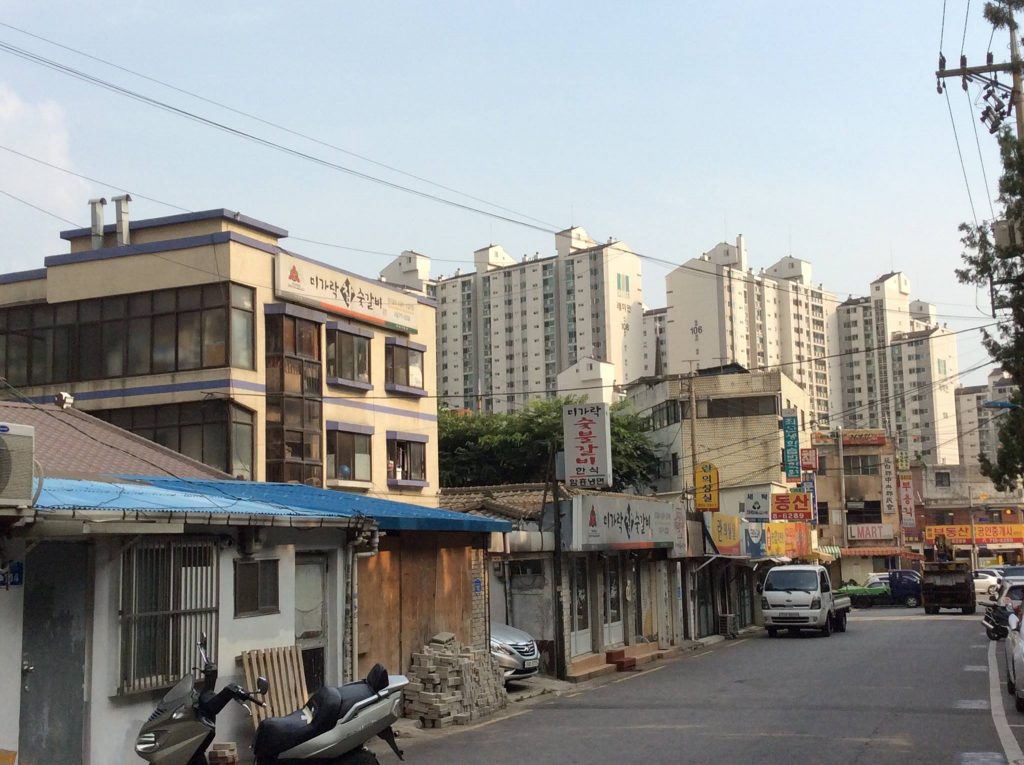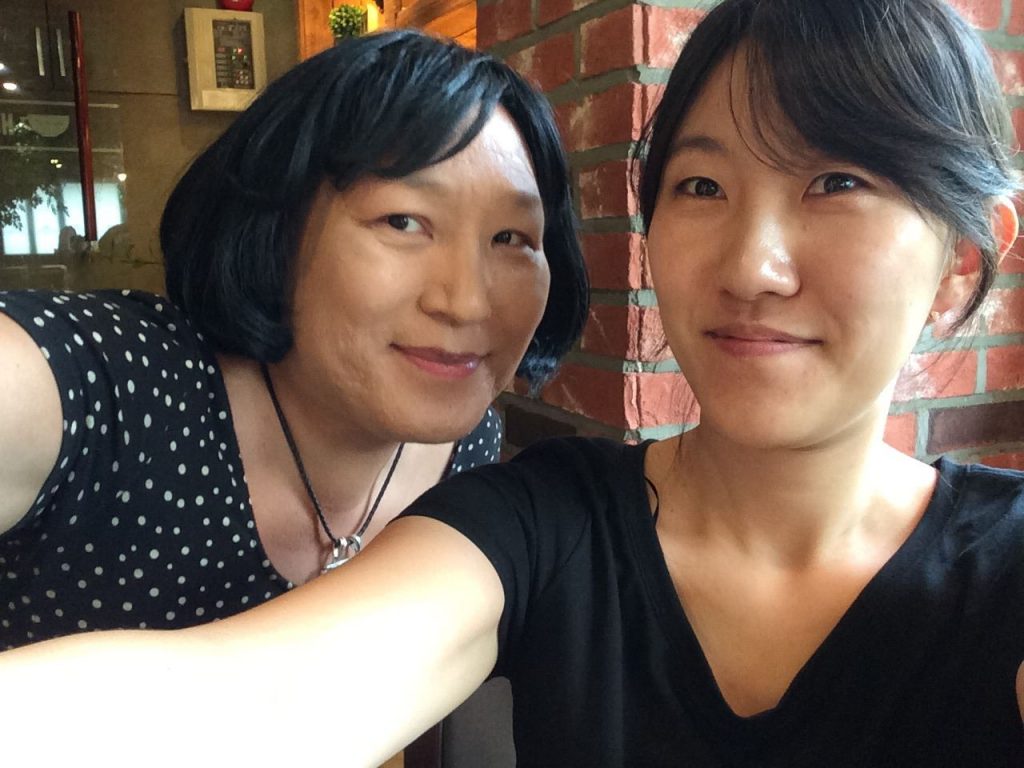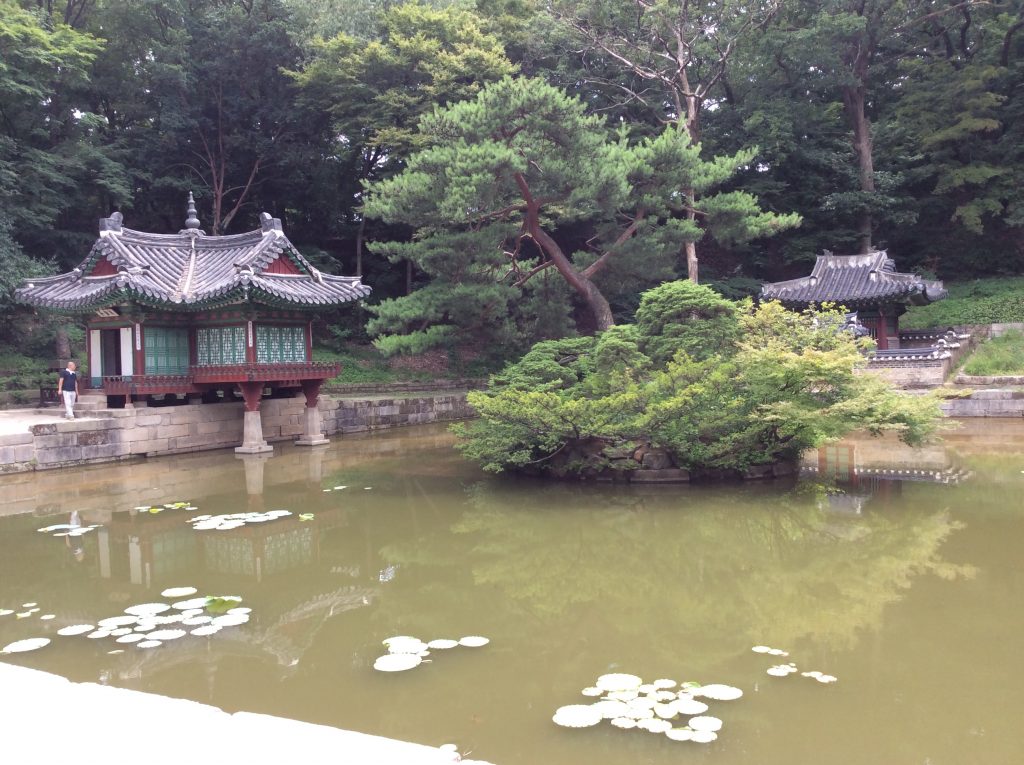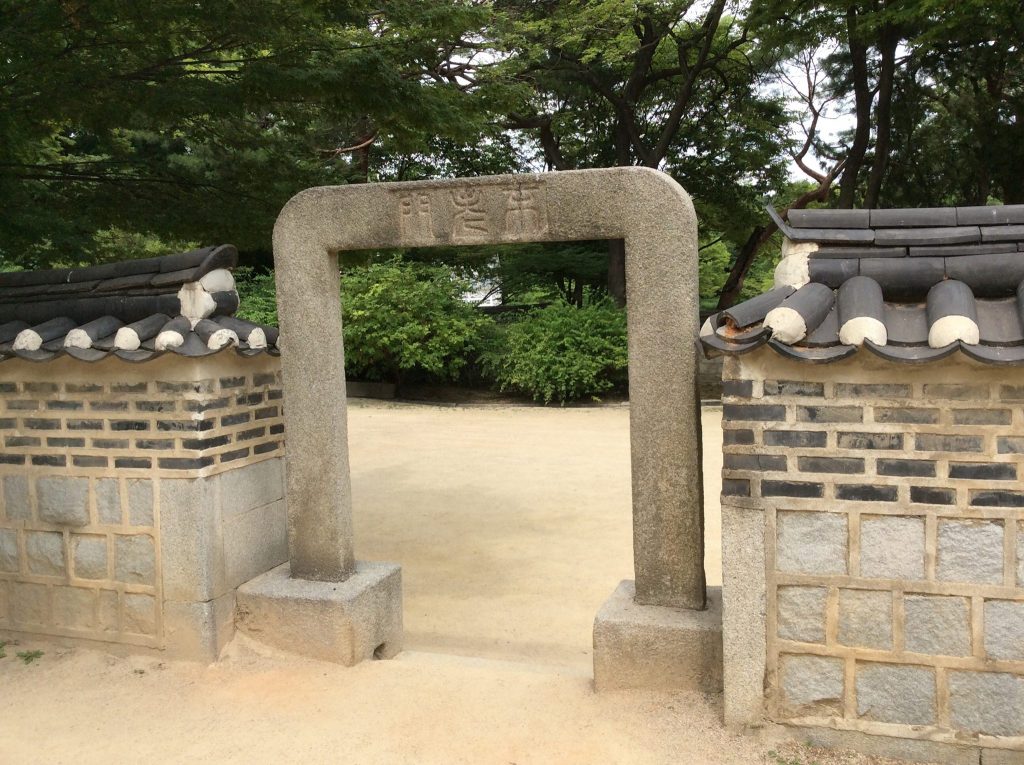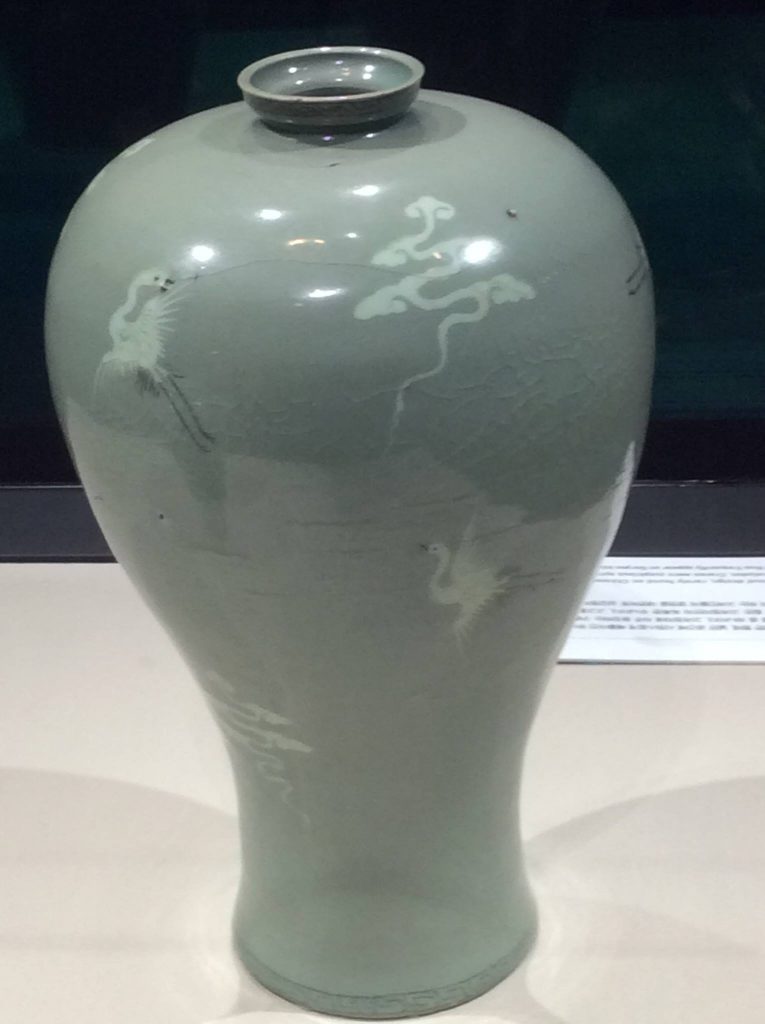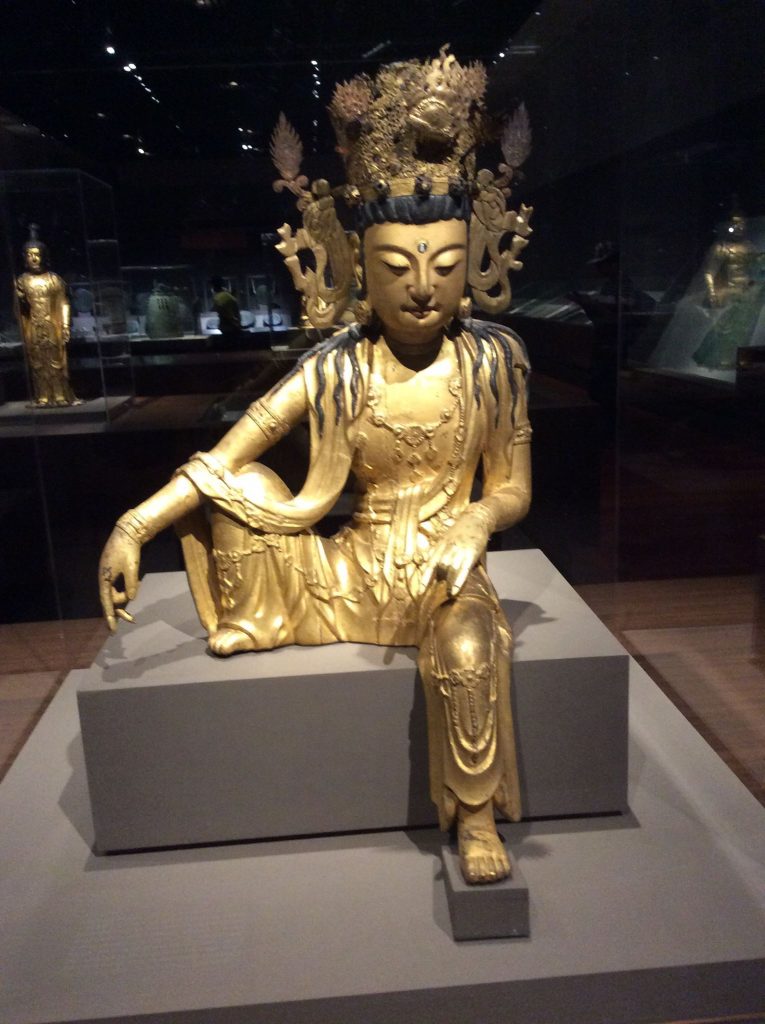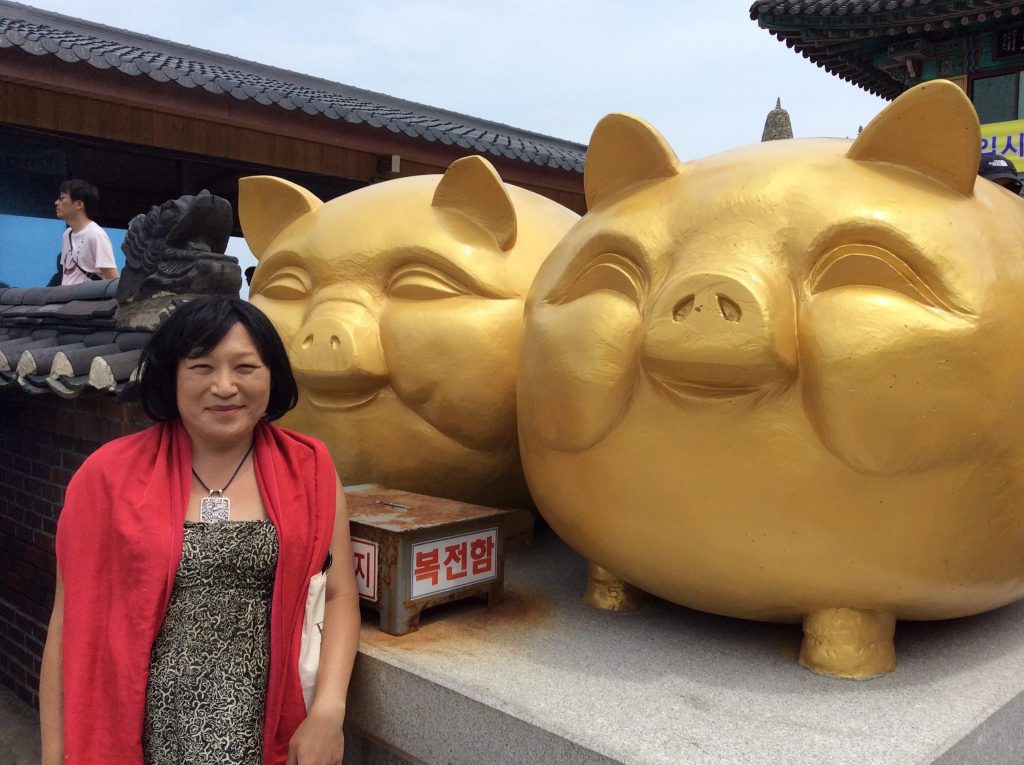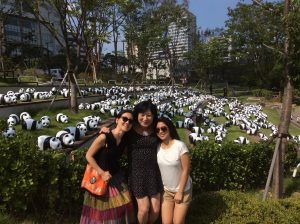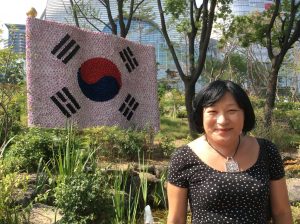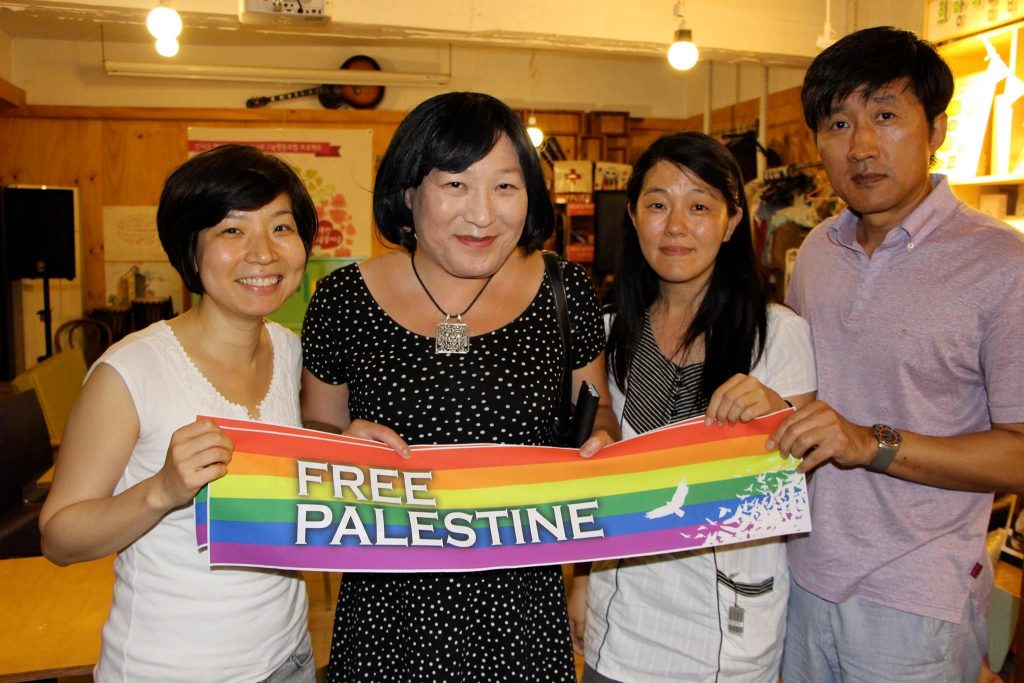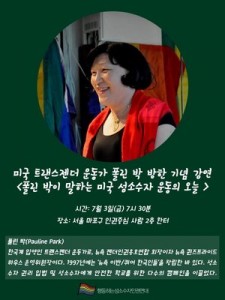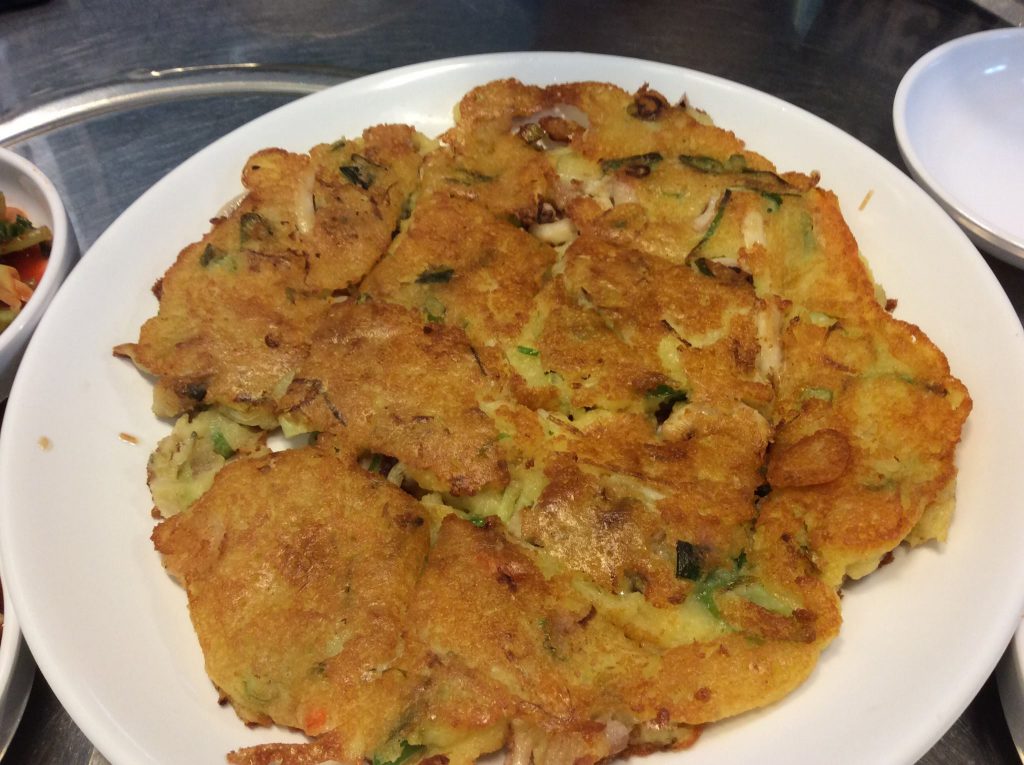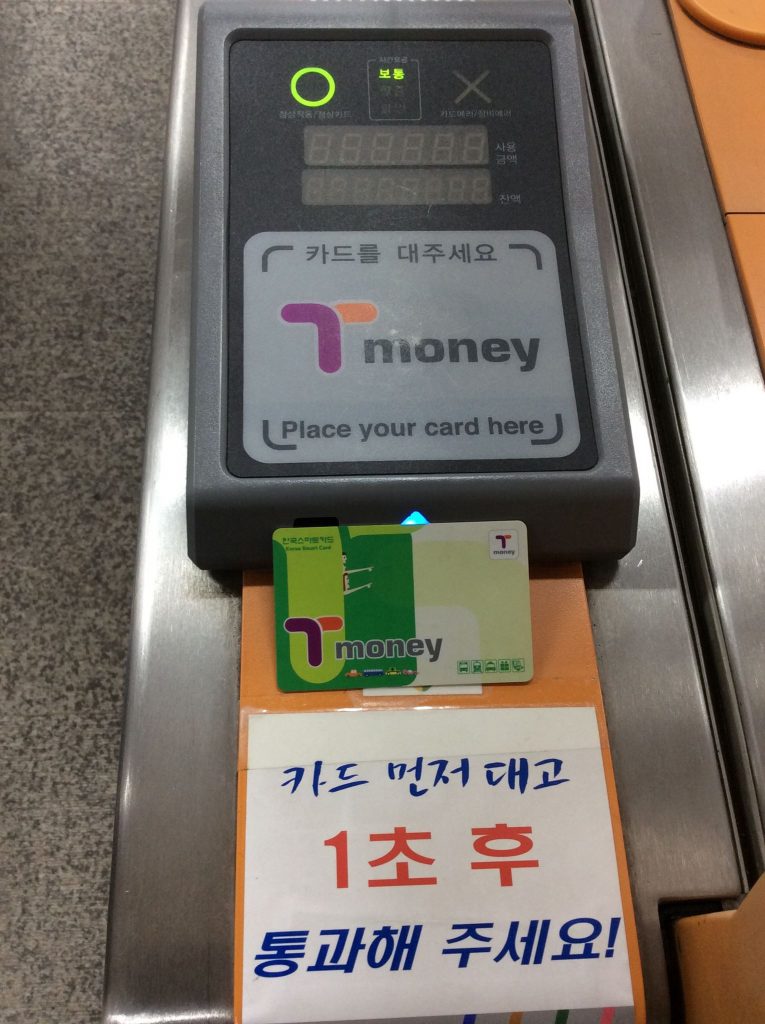Korea 2015: return to the motherland
by Pauline Park
In June 2015, I returned to Korea for the first time since I left at the age of seven and-a-half months old; it was a momentous trip. These are some photos from the month I spent in the Land of the Morning Calm.
Sunday, June 14
On the eve of my flight to Korea, I visited my friend Mohammad in Brooklyn.
Mohammad made a splendid Palestinian dinner for me and for our mutual friend Ang and I played a little piano for them on the grand piano in Mohammad’s house.
Monday, June 15
I flew out of La Guardia the next morning to Dallas/Fort Worth.
I spent the night in a mini hotel at DFW — my first experience of a Japanese-style mini hotel; it was clean and comfortable and it was convenient, as I didn’t have to go out of the security perimeter of the airport; in the morning, I was ready for my flight to Korea.
Tuesday, June 16
An ill omen for the country — though fortunately not for my flight or my trip — was Donald Trump’s announcement of his presidential candidacy, which I watched on CNN while waiting for my flight to Incheon. But a good omen was something S-shaped that I will leave to the imagination of readers that I produced on the morning of my flight to Korea.
I flew out of DFW to Incheon, Korea’s largest airport; it was impossible for me to get more than just a few restless hours of sleep on the 13-hour flight, cramped as I was in coach; the saving grace was that — though I was up against the emergency exit — I didn’t have anyone in front of me on the flight.
At least I got a decent dinner on the AA flight from DFW; we were given a choice of an American-style dinner and a Korean one and I opted for the Korean.
Wednesday, June 17
Incheon’s new-ish airport impressed me with its cleanliness and efficiency.
I arrived at Incheon international airport, only to be confronted with bilingual posters in English and Korean warning of the Middle East Respiratory Syndrome (MERS) ‘epidemic,’ which turned out to be a hyped non-epidemic.
My first view of the city of my birth upon my return after 54 years from the patio outside Seoul Station.
I took the AREX train into Seoul, arriving at Seoul Station around dusk.
I took a taxicab to the Ramada Hotel Namdaemun.
Thursday, June 18
I awoke the next morning to a spectacular panorama of Seoul as seen through the window of my room at the Ramada Hotel Namdaemun, with Seoul Station on the left.
The breakfast room at the hotel was large and airy and very woodsy.
I met two other participants in the Mosaic 2015 adult tour organized by Me & Korea which ran from June 17-28; we went out to lunch at Seoul Station and on the way back passed Namdaemun, the Great South Gate.
Namdaemun 남대문 has always held a special place in my heart: it is the only landmark in Seoul or Korea that I can distinctly remember from reading about the country of my birth in encyclopedias we had at home.
I was delighted to see Namdaemun for the first time.
I was delighted to meet Marie Frenette, a Canadian from Nova Scotia who had seen my post on Facebook about coming to Korea and was interested to meet me; after living in Korea for 9 years, she had become fluent in Korean — quite a feat for any North American with no familial connection with Korea. I remarked on the irony that I spoke the language of Marie’s ancestors (French) while she spoke that of mine…
Friday, June 19
I visited Soedaemun Prison Museum with my friend Kris; Korean nationalists were held here during the Japanese occupation and tortured and murdered. But the postwar Korean dictatorship continued to use Soedaemun to detain, torture and murder political dissidents for decades after the end of the Japanese occupation in 1945.
Saturday, June 21
Me & Korea’s Mosaic Tour began in earnest on Saturday.
After breakfast, we piled into a bus and drove to Gwanghwamun 광화문, the huge square in the center of Seoul that is where countless protests and demonstrations have taken place; there, we were greeted by an enormous statue of Sejong the Great 세종 대왕, the king who commissioned the creation of hangul 한글, the alphabet still in use today that is considered by many linguists to be among the most ingenious alphabets ever created.
Sunday, June 21
On Sunday, June 21, Mosaic tour participants attended a service at the Jesus’ Love Church, featuring a rather extraordinary sermon by the Elder Pastor Kim, who told us that we shouldn’t think of ourselves as Korean adoptees but rather as warriors for Christ whose mission is to take over the United States so that it can convert the entire world to Christianity. Thankfully, the sermon was only half an hour long (even if it seemed much longer), and after the service, some of us were paired with ‘host families,’ others with ‘host buddies.’
I met my two host buddies, the wonderful Tae-kyung Ahn and Sinhae Lee, and we saw much of Seoul together, including Changyecheon stream, one of the most delightful places in the city.
I enjoyed the delights of Cheonggyecheon #청계천; the stream flows once again through the heart of Seoul #서울 as it did before being covered in concrete for 45 years; it’s a rare bit of nature in Korea’s capital…
We also visited Deoksugung Palace 덕수궁, one of the five royal palaces in Seoul 서울. I had been there the day before, but it was pouring rain on Saturday; on Sunday, it was gloriously sunny and the light brought out the wonderful yellow color on the side of the throne room building.
I was enchanted by the Joseon dynasty era architecture of the palace.
And it was sweet of Taekyung and Sinhae to be so patient with my touristy curiosity, Taekyung taking a number of shots of me in front of one of the pavilions.
Monday, June 22
In the morning, I went with two other adoptees from the Mosaic tour and one of the interpreters to meet with staff at Social Welfare Services. Afterwards, we went out for lunch and I really loved the bibimbap that I had along with many other dishes I shared.
In the evening, participants in the Mosaic tour took a cruise on the Han River.
One part of a bridge on the river was spouting water from colored lights, which looked like the colors of the rainbow flag. It was a hot and humid evening, but the breeze on the river was wonderfully cooling.
And the nighttime views of Seoul were dazzling.
Tuesday, June 23
Around midday, Mosaic tour participants served lunch to elderly Koreans at a soup kitchen near Seoul station, which is the area where many of the city’s homeless congregate.
천 사 가 되 어 주 서ㅣ 요
Afterwards, we took a bus down to Gyeongju (Kyongju) in the southeast.
Cheomseongdae Observatory 첨성대 (瞻星臺) is one of the oldest surviving structures in Korea. Built in 647 during the reign of Queen Seondeok of the Silla kingdom, Cheomseongdae was used as an astronomical observatory.
Gyeongju (Kyongju)경주 was the capital of the ancient Silla kingdom during the Three Kingdoms period and it was fascinating to visit.
Mosaic participants took a group shot at Cheomseongdae Observatory.
Dongung Palace 동궁과 & Anapji Pond 안압지.
Hanhwa Resort in Gyeongju was a nice place to stay overnight, but surprisingly lacked wi-fi in the rooms and non-Korean TV stations.
Wednesday, June 24
National Museum
The Mosaic tour wended its way to Pohang 포항 in North Gyeongsang 경상북도 where we dipped our feet into the waters of the East Sea (Dong Hae) — Koreans don’t call it the ‘Sea of Japan’~!
The waters off Pohang are so clear you can see the sea floor and all of the flora and fauna in the ocean.
I dipped my feet in the Donhae.
The pier at Pohang
Jukdo market in Pohang was huge and fascinating.
Jukdo market in Pohang had live octopus and fish of every kind.
Live octopus on display in Judo market made for a visual feast.
Thursday, June 25
In the morning, Mosaic tour participants visited the Gyeongju National Museum, which has an enormous collection of Korean art and artifacts.
The most impressive artifact was a crown from the Silla kingdom.
We then lunched at Choi’s Bobsang before visiting the Gyochon Traditional Village (경주 교촌마을) on the southern edge of Gyeongju.
Three ‘ajumma’ taught us traditional Korean tea service
The biggest challenge was actually sitting on the floor cross legged.
Mosaic tour participants were instructed in traditional tea service and taught how to sing “Arirang,” the most famous of all Korean folk songs — though I had already learned the song before going to Korea.
We had Korean archery lessons as well.
On the way back to Seoul, we stopped at a rest stop for dinner and I had ttangcho ramyeon, a wonderfully hot and spicy noodle dish.
Friday, June 26
On the morning of the last full day of the Mosaic tour, participants scaled Naksan fortress wall.
In the afternoon, I took the Seoul subway with Sina Lee and Jacob Bowman to Insadong, a popular shopping area that is known for offering more traditional items than Myeongdong.
Insadong is a popular shopping district in Seoul.
Mosaic tour dinner
Sunday, June 28
I had a small but perfectly serviceable room at the Itaewon Inn for 10 days and nights.
The Queer Korea Festival drew a crowd estimated at 35,000, making it the largest event in the history of the LGBT community of Korea.
Christian fundamentalists tried to block the event from going forward and then tried to drown it out with loud noise but abjectly failed in that goal.
This was the first Queer Korea festival in Seoul City Hall Plaza in the heart of the city.
At the festival, a young man confronted a Christian fundamentalist — though they were speaking in Korean, so I couldn’t understand what they were saying; but I guessed that the young man was gay and was challenging the minister’s homophobia.
Christian fundamentalists had tried to stop the Queer Korea Festival, but organizers were successful in challenging them in court.
I was surprised and delighted to see a big banner declaring “Queers Against Israeli Apartheid — Free Palestine.”
I was invited to keynote the Queer Korea Festival (퀴어문화축제 & 퍼레이드).
Chogakbo is a new transgender advocacy project and had a float in the Seoul Pride Parade.
Seoul Pride 2015 was the most exciting pride parade I’ve ever been in; there were no pandering politicians and no corporate sponsorship, just ordinary LGBT people marching for their rights.
The mayor of Seoul put 3,000 police officers on the ground to guard participants in the Queer Korea Festival and Seoul Pride Parade.
Seoul Pride drew thousands of LGBT Koreans and allies to march for LGBT rights.
Monday, June 29
On Monday, June 29, Larry Tung and I met with Bong Youngshik and Kim Jiyoon at the Asan Institute to discuss their report, “Over the Rainbow: Public Attitude Toward LGBT in South Korea,” on LGBT rights and discrimination in Korea. In the afternoon, we met with a Korean transgender activist.
I saw Pororo the Little Penguin 뽀롱뽀롱 뽀로로 & his friends in the Seoul subway six years ago; my favorite is Eddy 에디 the fox, who is just so adorably cute…
Tuesday, June 30
Larry Tung and I explored the popular shopping district of Myeongdong on June 30 and I commented on how very ‘metrosexual’ young Korean men were, especially in the promotional posters in Myeongdong, in which the young men are very boyish, some even quite girlish to an American eye.
Larry and I were amused by the cute products on the shelves in stores in Myeongdong.
Myeongdong cut-outs of a Korean boy band with a K-Pop look, which seems to be a dominant influence among young Koreans in Seoul.
At Daeksugong palace, Larry and I watched the changing of the guard; I was absolutely enchanted by the bright yellow garb of some of the guardsmen, with the feathers on their Joseon (Choson) dynasty era style hats and their traditional Korean flute playing.
In the evening, we passed by Gwanghwamun, the great entrance gate to Gyeongbokkung, the main royal palace and the largest of the five royal palaces in Seoul.
King Sejong commissioned the creation of the Korean alphabet and is the most revered of all Korea’s kings.
July 1
I was invited to speak at a press conference at the Turkish consulate in Seoul protesting the Istanbul police violence against participants in the Istanbul Pride Parade.
July 3
In the morning, Larry Tung and I went to the Social Welfare Services office to film in front of the rock outside the SWS office.
In the afternoon, I went with Minyoung Kim to a local police precinct to register as an adoptee; though nothing came of it, I appreciated her going out of her way to make me accessible to any birth family who could be searching for me.
I had some noodles before my speaking engagement in the evening.
In the evening, I spoke at a meeting of Solidarity for LGBT Human Rights of Korea (Haeng Seong In) (행동하는성소수자인권연대) attended by over 50 people.
The organization had created a poster to announce my speaking engagement:
July 4
I spent the Fourth of July in the land of my birth, traveling from the city of my birth to Busan, the second largest city in Korea, with Larry Tung.
On the way, we passed through Namdaemun, the Great South Gate, which has always been for me the iconic image of the city of my birth.
In the arch of the great gate there’s a wonderful dragon painted on the wood frame of the inside of the arch (7.4.15) 남대문
Larry and I bought tickets for Busan at Seoul Station.
We visited Daegaksa 대각사 Temple (Nampo-dong) near Busan Tower.
The reclining Buddha was striking.
Larry and I went up Busan Tower and took in the spectacular view of the harbor and the city.
Afterwards, we went to Lotte Mall, where we saw everything on sale from pianos to Japanese-style toilet seats.
July 5
We visited the Haedong Yonggungsa Temple 해동 용궁사 outside of Busan 부산, one of the most famous Buddhist temples in Korea.
I found some lucky pigs on the grounds of the temple.
I love pigs and the fact that they are considered symbols of good fortune in traditional Korean mythology.
After getting back into Busan, we visited Shinsegae, which claims to be the largest department store in the world.
Zooraji is a children’s playground on the top floor complete with a carousel and dinosaurs.
July 6
I joined friends in strolling through Naru Park in Songpa-gu 송파구 in Seoul 서울 on a hot and humid day.
And we
I walked through the neighborhood of Mapo-gu, parts of which looked like what Seoul was before Park Chung-hee’s crash industrialization.
The
The
The
The
July 7
I had breakfast with Sina in Itaewon.
It was wonderful to see Sina and to reflect on the Mosaic Tour that we’d participated in together.
July 8
I was
July 9
I I had lunch with Hyong-Jin, Myunghwa & 나 양 in Itaewon #이태원 #서울
July 10
I visited Changdeokgung 창덕궁 with my friend Kris.
One of the five royal palaces in Seoul, Changdeokgung is a UNESCO World Heritage site and famous for its celebrated Biwon 비원 — the ‘Secret Garden’ that was intended for sole use of the king and the royal family.
Seoul: a small gate in the Piwon — the Secret Garden of the Changdeokgung (7.10.15)
July 11
Korean celadon 청자 in the National Museum of Korea 한국 조선 in Seoul 서울.
I came across this boddhisattva.
July 5
July 6
I met up with two Korean friends in Seoul and we strolled around Seokchon Lake Park 석촌호수공원 coming across a World Wildlife Fund promo with plastic pandas.
Strolling around Seokchon Lake Park 석촌호수공원 we came across this Korean flag made out of chrysanthemum flowers.
In the evening, I went to Mapo-gu Café for a meeting of Palestine Peace & Solidarity in South Korea Palestine Peace & Solidarity in South Korea 팔레스타인평화연대 where I gave a presentation on my participation in the first US LGBTQ delegation tour of Palestine in Jan. 2012 to members of the group.
Afterwards, I went out to dinner with members of Palestine Peace & Solidarity in South Korea 팔레스타인평화연대.
The poster for my presentation to members of Palestine Peace & Solidarity in South Korea 팔레스타인평화연대 on my participation in the first US LGBTQ delegation tour of Palestine at their July 7 meeting (7.9.15)
July 8
I met up with Hyong-jin, Myunghwa & Kim Na-young in Itaewon for lunch.
I had had haemul pajeon (seafood scallion pancake) for dinner in Seoul.
I was amused by the fact that the Seoul Metro calls its subway currency ‘T money.’
I took 6,686 photos during 30 days in Korea — 2,658 with my iPad & 4,028 with my digital camera — including 625 on the first memory card, 2,430 on the second card & 973 on the third. That compares with 1,996 photos that I took in 7 days in Paris in May, which averaged 287 photos per day, vs. 222.9 photos per day on average in Korea. So the Paris trip exceeded Korea for the most photos taken per day on average in any given trip, but the Korea trip topped the charts for the total number of photos taken on any trip until my five weeks in Europe in 2017, during which I took over 30,000 photos.
I arrived safely home after an uneventful three-hour flight from Dallas, following a more than 12-hour flight from Incheon, less than 12 hours short of 30 full days since leaving home on the biggest trip of my life (so far, at least). My month in Korea was the longest, most exhausting but most productive & most fun trip of my life and the most important since the trip that brought me to the land of my youth from the land of my birth so many years ago.
